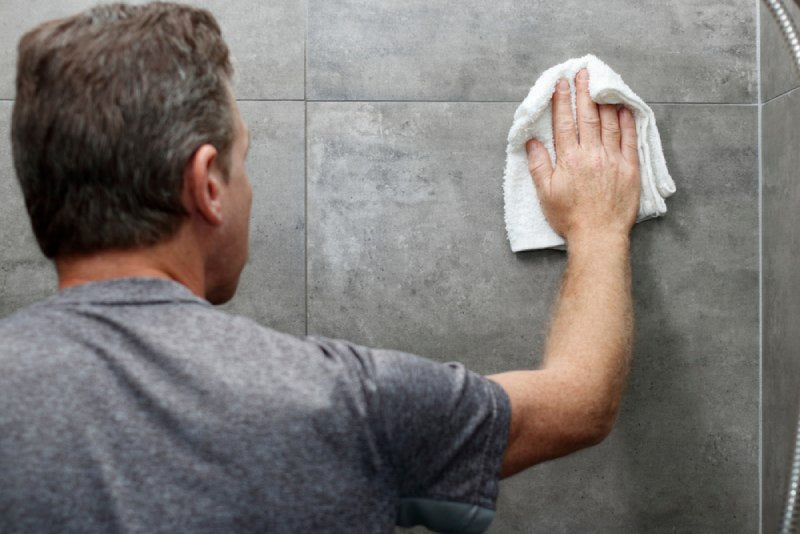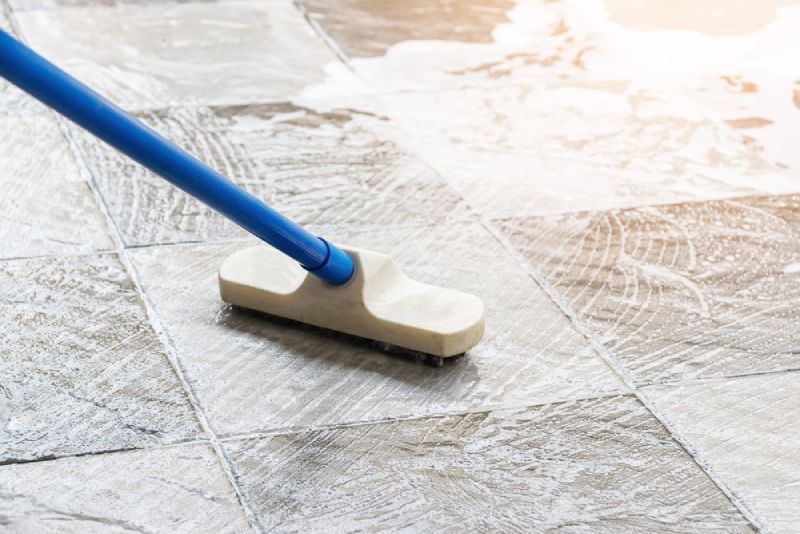How to Clean Paving Stone Surfaces – Easy Guide
Mar 28, 2023

Do your paving stone surfaces look old and dingy? Do you worry about the cost of replacing all the stones because they are beginning to look ugly? Are you a paver patio cleaner who wishes to know the right materials suitable for the exercise?
You are in the right place! This article offers a detailed but easy-to-understand step-by-step guide on how to clean paving stone surfaces and make them last longer.
Let’s get to it!
Simple Steps on How to Clean Paving Stone Surfaces
1. Prepare your paver patio cleaning materials

When you finally choose the moment that you want to clean your paving stone surfaces, that is not the time to start thinking of what material to use or worse still contemplating between two or more materials. Choose them earlier on.
Suggestions: Broom, Dishwashing liquid soap, high-pressure hose pipe, Vinegar (white), a soft floor brush, a hard floor brush, a wire brush, and most importantly, water.
2. Remove Items From Surface Before Paver Patio Cleaning
This is important because items such as potted ornaments, furniture such as chairs, amongst others can prevent you from moving freely when you begin to clean and they could also get wet. The spot which they occupy might also not be cleaned and might accumulate even more dirt over time.
3. Sweep your pavement with a broom
Doing this helps reduce the amount of dust, sand, and debris as well as remove leaves that might be on the surface. When sweeping as part of paver patio cleaning, do well to harvest weeds, if any, that are growing in the middle of the stones.
4. Spray the entire paving stone surface

Use water from a high-pressure hose to spray the entire paving stone surface. After this, mix a suitable amount of vinegar with moderate water. Even if you’re not an experienced paver patio cleaner, the amount needed depends on the length and width of your pavement surface. You wouldn’t want to mix too much for a small surface (waste of resources) nor would you mix too little for a large surface (undesired result).
5. Apply Vinegar and Water Mixture
Apply the vinegar and water mixture majorly to deeply engraved stains such as those caused by wet leaves, dust, debris, and even from spills of drinks. Then, sprinkle the remaining mixture over the rest of the pavement surface. Let it sit for about forty-five minutes to an hour for thorough paver patio cleaning.
Note: It would be wise to use white vinegar rather than black vinegar as the latter might leave stains on your paving stone surfaces.
But if black vinegar is the only available option at this time, do well to test the mixture first on a small area of your pavement surface to be sure that it doesn’t leave unwanted stains behind.
You can also do a test for a mixture of white vinegar and water to check whether the vinegar is not too much in the water as too much of it can spoil the paving stone surfaces’ color by overly-whitening the paving stones making them look too sharp.
6. Scrub the Surface With a Brush
After the time allocated for the mixture (water and vinegar) to remain on the surface is over, apply the regular liquid dish-washing soap on some parts of your paving stone surface. Then sprinkle the surface again with a little water.
Now, use the soft brush to scrub, scrub and scrub. The soft brush prevents the scratching of paving stones and is to be used on the parts that have light stains or no stains at all.
After this, use the hard brush to scrub away stains that the soft brush could not handle. The only difference between the soft and hard brushes is that the hard brush applies a little more pressure to the paving stones than the soft brush.
Note: Never use a wire brush as a replacement for a hard brush. As mentioned earlier, the hard brush in this context should only be strong enough to remove dirt that soft brush cannot handle.
Do not use a wire brush to scrub directly on your paving stone surfaces hoping it will remove dirt, it won’t.
Since a wire brush is made of metal, it would only cause a disastrous effect by scratching and damaging your paving stone surface as well as removing the essential sand that is between one paving stone and another.
7. Rinse and Let It Dry
After brushing, rinse away the dirt and mixture on your paving stone surface by using your high-pressure hose to apply water to all parts of the surface. Do this until everything is cleared off and left to dry
Note: Do not focus on the water coming from your high-pressure hose to the joint region between the stones so that the pressure from the water doesn’t remove the sand holding them together.
The high-pressure hose for cleaning the paver patio is advisable only because it prevents your paving stone surfaces from getting overly soaked with water in contrast to a low-pressure hose.
8. Replace Broken Stones
Once dry, you might notice that some of the stones are broken or some parts of them have chopped off, it would be wise to replace these stones with new ones as soon as you can. There might just be a few, but replacing them as soon as you see them helps reduce the cost of replacing a lot of them at once.
Also, apply grout (a mixture of cement sand and water) to the joint region between your paving stones where the former grout has been washed away or the place which needs to be regrouted.
You can then use a wire brush, if need be, to remove excess grout so it won’t stick to your paving stone surface.
Lastly, apply powdered herbicides in between stones to control weed growth.
Quick reminder: Take a broom and sweep your paving stone surfaces at least once a week, especially during rainy seasons, so that sticky stains left by wet leaves won’t be on your pavement.
Conclusion
Although this article focuses basically on how to restore dingy pavements to a desirable state, it also offers insight on how to clean pavers. If you’ve recently had pavements in your building, it can also serve as a maintenance guide.
Paver patio cleaning is not an easy task, which is why some households choose to employ a regular paver patio cleaner to carry out the work. However, you can regularly maintain your paving stone surfaces by applying the suggestions in this article. This way, cleaning would be less time-consuming and less costly since you won’t always have to restore or replace them all the time.






